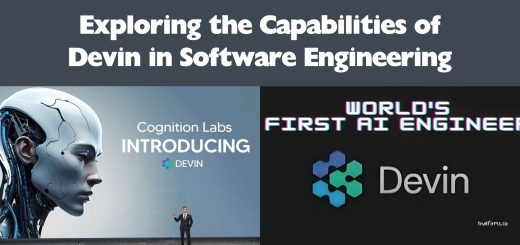What Is Generative AI? Everything You Need to Know

In the field of artificial intelligence (AI), the area of generative AI is especially interesting and developing quickly. Generative AI systems are able to produce unique and creative outputs that imitate human behaviors, such as artwork and prose. We’ll get into the complexities of generative AI in this blog article, looking at its models, use cases, advantages, drawbacks, and prominent applications like DALL-E, ChatGPT, and Gemini.
What Is Generative Artificial Intelligence?
Generative AI is a class of algorithms that produce original content autonomously. Unlike traditional AI systems that follow predefined rules or patterns, generative AI has the ability to generate new data that resembles the input it was trained on. This capacity for creativity and novelty makes generative AI particularly intriguing for various applications across industries.
How Does Generative AI Work?
Neural networks, a kind of machine learning algorithm modeled after the human brain, are the foundation of generative AI. These networks are trained on vast amounts of data and learn to generate new content by recognizing patterns and relationships within the data. Through techniques such as generative adversarial networks (GANs) or autoregressive models, generative AI systems can produce outputs that exhibit realistic characteristics.
Generative AI Models
Several prominent generative AI models have emerged in recent years, each with its own unique capabilities and applications. Notable examples include:
DALL-E: DALL-E is a generative model that OpenAI developed that can generate visuals from text descriptions. It has garnered attention for its ability to generate highly detailed and imaginative images based on user input.
ChatGPT: As an extension of the GPT (Generative Pre-trained Transformer) architecture, ChatGPT is specifically designed for conversational interactions. It can generate human-like responses to user prompts, enabling engaging and natural conversations.
Gemini: OpenAI created the dual-model framework Gemini, which mixes generative and selective models. It excels in tasks such as image classification, generation, and translation.
What Are the Use Cases for Generative AI?
Generative AI finds applications across a wide range of domains, including:
• Art and Design: Generative AI can be used to create digital artwork, design prototypes, and generate aesthetic content.
• Content Creation: It can assist in generating text for various purposes, including writing articles, crafting marketing messages, and composing music.
• Simulation and Training: Generative AI can generate synthetic data for training machine learning models and simulating real-world scenarios.
What Are the Benefits of Generative AI?
Generative AI offers several advantages, including:
• Creativity: It enables the automated creation of novel and imaginative content, expanding the possibilities for artistic expression and problem-solving.
• Efficiency: Generative AI can automate repetitive tasks such as content generation, freeing up human resources for more complex endeavors.
• Personalization: It can tailor outputs to individual preferences and requirements, enhancing user experiences and engagement.
What Are the Limitations of Generative AI?
Despite its potential, generative AI also has its limitations, including:
• Quality Control: Generated outputs may lack consistency or coherence, requiring manual oversight to ensure quality.
• Bias and Ethics: Generative AI models may inadvertently perpetuate biases present in the training data, raising concerns about fairness and ethical implications.
• Resource Intensiveness: Training and deploying generative AI models can be computationally intensive, requiring significant hardware resources and energy consumption.
Personal Insights
As an AI language model, I’ve witnessed the rapid advancements in generative AI firsthand. While it’s fascinating to see the capabilities of these systems unfold, it’s crucial to approach their development and deployment with caution. Addressing issues such as bias, transparency, and ethical considerations will be paramount as generative AI continues to evolve.
In conclusion, generative AI represents a remarkable fusion of creativity and technology, unlocking new possibilities across various domains. By understanding its workings, applications, and implications, we can harness its potential to drive innovation and enrich human experiences.
Generative AI is not just a tool for automation; it’s a catalyst for imagination and discovery, shaping the future of AI-driven creativity and innovation.
Read More:
Devin, the World’s First AI Software Engineer: Redefining Software Engineering
The Future of (AI)Artificial Intelligence: How AI Is Changing the World in 2024











